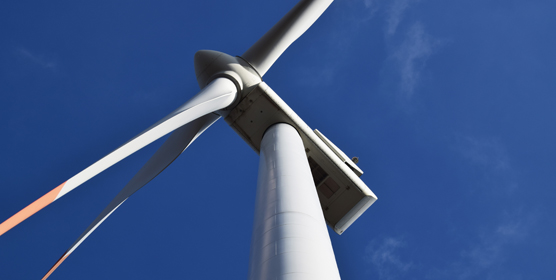
© Unsplash
Climate change is one of the most significant environmental issues our society has to face. It is connected to global resource depletion, biodiversity loss and unsustainable consumption and production habits.
International agreements bind Finland to mitigating global warming. Actions are necessary from many different actors – nations, local authorities, businesses and citizens. Cities and municipalities play a central role in mitigating climate change. They can support local businesses and residents in making climate friendly choices.
International climate objectives
In order to mitigate climate change, both national and international objectives have been set. Under the Paris Climate Agreement, all countries in the world committed to reducing their emissions. However, the emissions reductions commitments given thus far are not sufficient to limit the warming of the climate to 1.5 degrees Celsius, which is considered the critical limit.
An objective of the EU’s current climate policy is to reduce emissions by at least 40 per cent of the level of 1990 by 2030. As the EU objectives become stricter, so must Finland’s national objectives. Furthermore, municipalities, regions and companies have set their own objectives.
Finland’s climate objectives
Finland’s current objective is to reduce greenhouse gas emissions nationally by 39 per cent by 2030, compared to the level of 2005. This objective concerns the effort sharing sectors not involved in the emissions trading scheme, i.e. transportation, agriculture, heating, machinery, F-gases and waste management.
In 2017 The Medium-Term Climate Policy Plan (KAISU) was approved and set to run to the year 2030. It sets out the measures necessary to reduce greenhouse gas emissions for the sectors not involved in the emissions trading scheme. The plan, along with the National Energy and Climate Strategy (EIS) approved in November 2016, guides Finland along the path to achieving the climate objectives agreed upon in Juha Sipilä’s Government Programme and the EU, by 2030. The National Energy and Climate Strategy is leading consistent progress towards reducing greenhouse gas emissions by 80–95 per cent by 2050.
Antti Rinne’s government has set the objective of Finland being carbon neutral by 2035. After this, emissions should be smaller than carbon sinks. In the Paris Agreement, carbon neutrality is defined as emissions of human origin and carbon sinks of human origin being equal. This ambitious objective will require updates to the current KAISU and EIS measures and objectives. The EU’s climate objectives for 2021–2030 also concern the land use, land use change, and forestry (LULUCF) sectors. Therefore, reducing emissions as well as preserving and strengthening carbon sinks in the LULUCF sectors, will become part of Finland's climate objectives too.
Measures for mitigating the emissions of transportation, agriculture, heating and consumption
Outside the emissions trading scheme, the greatest emission reduction needs can be found in transportation, which currently causes approximately a fifth of Finland’s greenhouse gas emissions. Transportation accounts for 40 per cent of the emissions of the sector outside the emissions trading scheme. The objective is to halve the emissions from transportation by 2030 compared to the situation in 2005. The emissions reduction potential is greatest in road transportation.
In agriculture, measures that bring about emission reductions in the effort sharing sector primarily concern the processing of manure and mitigation of nitrous oxide emissions from organic soil. Emissions can be reduced by measures such as increasing the groundwater level with controlled subsurface drainage, forestation in organic soil, and promoting biogas production in agriculture.
The greatest source of building-specific heating emissions is oil heating. The government is discontinuing the use of oil heating in its own property by 2025.
In order to mitigate climate change, we must also influence consumption and consumption behaviour. The medium-term climate policy plan defines a range of measures that can be used to reduce consumption-based emissions. These reduction measures can be seen in practice in emissions from for example transportation, separate heating, and agriculture.
Objectives of municipalities, regions and companies
The medium-term climate policy plan also emphasises the role of municipalities in climate work, as municipalities are responsible as organisers of local planning, transportation planning, public transport, services, and environmental education.
Public procurements provide a viable opportunity to promote the objectives of the climate policy in the municipalities’ practical operations. A municipality can, for example, reduce emissions with energy solutions in buildings and heating facilities it owns, or by supporting its staff in adopting environmentally friendly operating practices. A number of municipalities have drawn up their own climate strategies and programmes. Support for climate work is also available through a range of different networks.

© Pixabay
Municipal networks to support climate work
The Towards Carbon Neutral Municipalities (Hinku) network, coordinated by the Finnish Environment Institute, features over 80 pioneer municipalities of different sizes as well as five regions, aiming for a reduction of at least 80 per cent in greenhouse gas emissions by 2030 compared to the 2007 level.
Examples of other networks supporting climate work include the international mayors’ network Covenant of Mayors, the IlmastoKunnat network of the Association of Finnish Local and Regional Authorities, and the Finnish Sustainable Communities network, also known as the Fisu network. The 11 member municipalities are aiming not just for carbon neutrality, but also for becoming waste-free and to have managed overconsumption by 2050.
Climate programmes with regional cooperation
Regional cooperation is also important in mitigating climate change. Many regions have drawn up climate programmes. With the support of the Canemure project, Uusimaa, Päijät-Häme, Pirkanmaa, Southwest Finland, Satakunta, South Karelia and North Ostrobothnia are preparing their own roadmaps for the mitigation of climate change. Work is also underway in Kymenlaakso to prepare a regional roadmap.
Many companies have already been monitoring the environmental impacts of their operations and products for many years, as well as setting targets and developing new, more sustainable processes, services and practices.